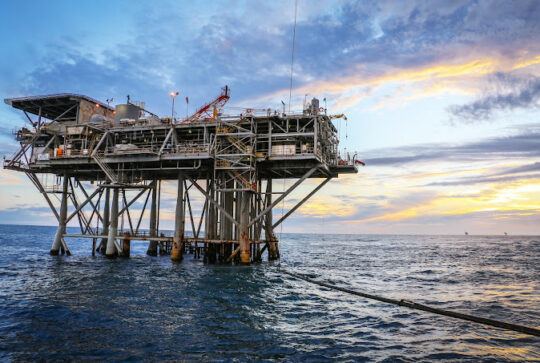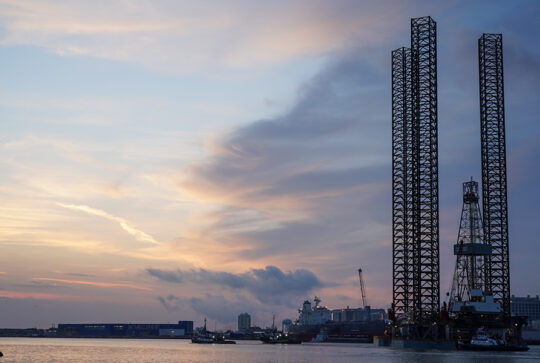July 26, 2021
Department of lnterior’s Virtual Forum on the Federal Oil and Gas Program
Tershara Matthews
U.S. Department of the Interior Bureau of Ocean Energy Management
Chief, Office of Emerging Programs
1201 Elmwood Park Boulevard
New Orleans, LA 70123
RE: BOEM’s Request for Interest (RFI) in Commercial Leasing for Wind Power Development Gulf of Mexico Outer Continental Shelf (GOM OCS); RIN: BOEM-2021-0041
The Gulf Energy Alliance (“GEA”) respectfully submits these comments as an “Interested or Affected Party” pursuant to Section 4 under “Supplementary Information” of the Request for Interest.
The GEA is a coalition of leading independent offshore oil and natural gas producers dedicated to supporting policies and regulations which encourage investment, innovation, job creation, and safe and environmentally sound practices in the offshore energy industry in the U.S. Gulf of Mexico (“GOM”). Our mission is to inform and educate the public and decision-makers in business and the government about the ever-changing innovations in offshore exploration and development which continue to transform our energy landscape and the broader U.S. economy. We are committed to working with stakeholders, regulators, and elected officials at all levels of government to improve our nation’s energy security through the development of vital energy resources in the GOM.
While GEA members’ focus is the development of our nation’s offshore oil and natural gas resources, GEA members have dedicated resources to research how the extensive offshore infrastructure network can be utilized to support a lower carbon future. We believe that offshore independents are and will continue to be a large player in traditional and non-traditional energy sources developed offshore in the years and decades to come due to our understanding of the offshore energy environment.
Existing offshore infrastructure is poised to play an important role in the transition to a lower carbon future while continuing to help meet demand for oil and natural gas resources for the foreseeable future. Based on early feasibility studies, a large number of the approximately 1,700 platforms remaining in the GOM are strategically located to help meet the nation’s renewable energy and climate mitigation goals, with potential uses including hydrogen fuel generation, carbon capture and storage, wave energy, geothermal energy, seawater mineral extraction, and other emergent technologies.
Congress has also recognized that some later-life facilities in the GOM could provide opportunities to support the production, transportation, or transmission of energy from sources other than oil and gas in the Energy Policy Act of 2005.1 The Department of Interior responded to the express intent of Congress by preparing a Programmatic Environmental Impact Statement in 2007 and promulgated regulations in 2012 for Alternate Right-of-Use and Easements (Alt. Use RUEs) to provide a regulatory framework for repurposing late-life oil and gas facilities on the GOM OCS for alternate uses.2 An Alt. Use RUE permit allows an offshore platform to continue to operate for alternate uses after oil and gas production ceases, thus allowing the beneficial use of platforms to continue for many years, where appropriate.
As offshore technology continues to evolve, and existing technologies reach commercialization, it is important that BOEM maximize utilization of the existing Alt. Use RUE framework if we are to continue to progress emergent renewable technologies and advance climate mitigation initiatives. Additionally, in addition to the continued beneficial use of existing platforms through ocean monitoring and research, numerous studies confirm the ecological benefits provided by offshore platforms and their significant value as marine habitat, not only for commercial and recreational fisheries, but also for marine mammals. As the feasibility and commercialization of emerging technologies continues to progress, it is imperative that we capitalize on the billons of dollars already invested in existing offshore infrastructure.
The GEA requests that the environmental review conducted by BOEM for Commercial Leasing for Wind Power Development in the GOM OCS include the substantial beneficial uses of offshore platforms for renewable energy and climate mitigation initiatives, including the environmental and ecological effects of the wholesale removal of the platforms if they are not allowed to be repurposed.
We look forward to our continued collaboration.
Sincerely,
Kevin Bruce
Executive Director
Gulf Energy Alliance
(281) 210-0536
1 See Sec. 388 of the Energy Policy Act of 2005 (Pub. L. 109-58).
2 30 CFR 585, Subpart J.




